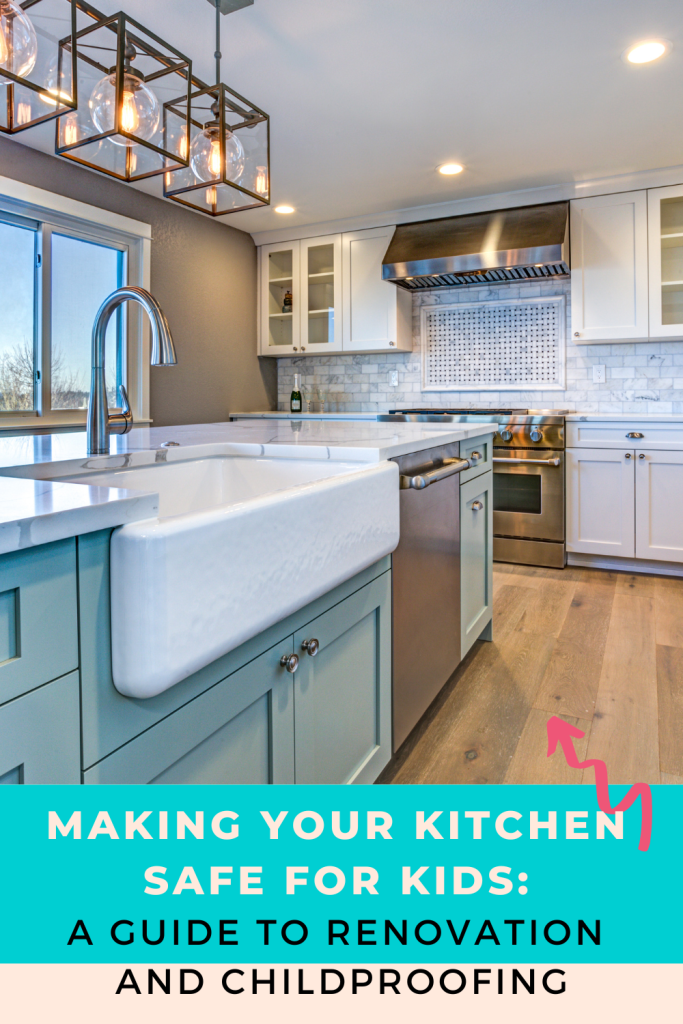Making Your Kitchen Safe for Kids: A Guide to Renovation and Childproofing
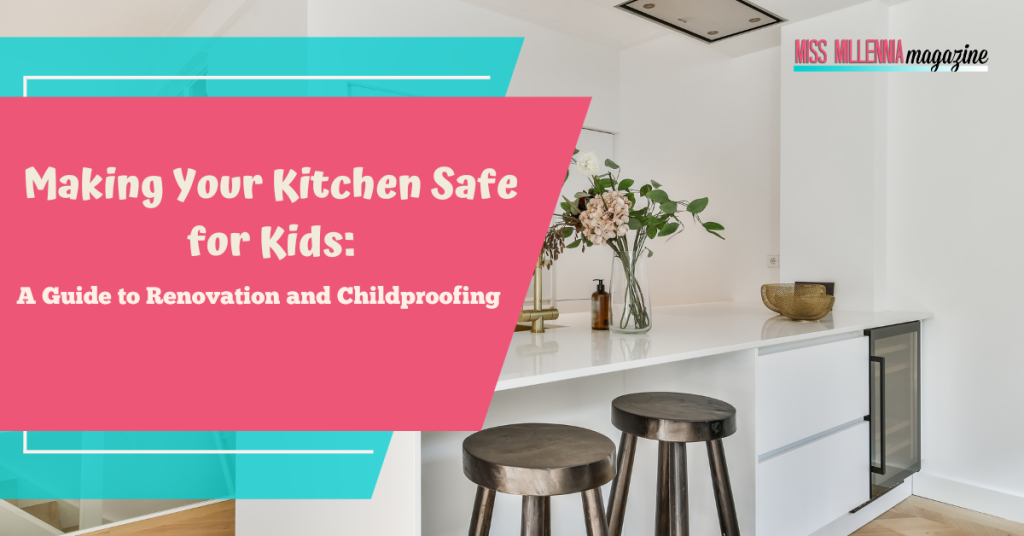
At least 67,000 children experience an accident in the Kitchen every year, according to the Royal Society for the Prevention of Accidents.
And that’s just in the United Kingdom. In the United States, that number is closer to 160,000.
So, as much as we think of our homes as a haven, that’s not exactly true.
Especially when it comes to our children, we love to see them exploring and allowing them to learn independently for their development.
But that doesn’t mean we shouldn’t take any steps to minimize the risk of them getting hurt. After all, our homes, and especially our kitchens, are filled to the brim with a lot of dangerous stuff:
Chemicals, hot stoves, sharp objects, and tools… things that any responsible parent wouldn’t want near their children.
In this article, we’ll look at a few measures you can take to keep your home as safe as possible for your kids, paying particular attention to the most dangerous room of them all: the Kitchen.
Who Needs Kid-Proofing Anyway?
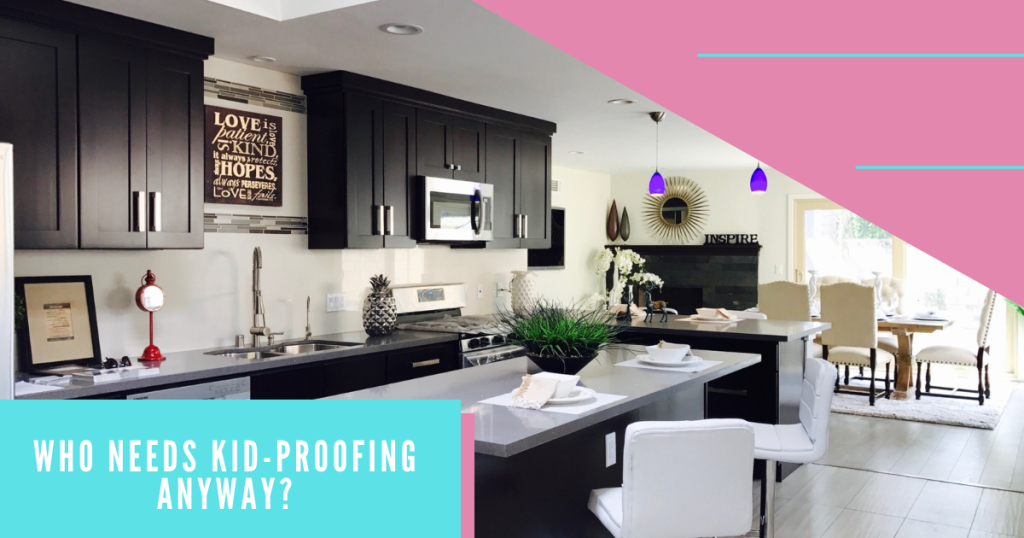
Despite parents’ deep-rooted instincts to protect their children, some still question if kid-proofing their home is necessary.
Especially if they’re a little more old-school and stuck in the “we didn’t have any of these precautions growing up and turned out just fine” mentality.
While there’s merit in letting kids make mistakes and learn independently, the statistics tell us that sometimes those learning experiences are costly. For example, according to the Centers for Disease Control and Prevention, unintentional injuries are the leading cause of death for children in the United States.
Scary, right?
And let’s be honest, the Kitchen, in particular, poses more threats than anywhere else in most homes. Even adults are constantly injured by those hazards, so taking steps to minimize risks for the little ones is very sensible.
Some might argue that childproofing their Kitchen is expensive and unnecessary. Accidents can indeed happen even with the most comprehensive childproofing measures, but consider the cost of not having it:
Even minor injuries sometimes require an expensive trip to the hospital, medicine, and lost wages if a parent needs to take time off to be with the child. Not to mention emotional trauma for both the family and the child.
It’s also worth mentioning that many childproofing measures, such as outlet covers and cabinet locks, are relatively inexpensive and easy to install.
Even though it’s tempting to overlook the need for childproofing our homes, the facts are clear. By making our homes, especially our kitchens, safer for kids, we can protect our little ones from unnecessary harm and provide ourselves with peace of mind.
Before You Start:
Assessing Your Home’s Needs

Now that we’ve seen that even simple childproof measures can make a difference, we’ll move on to the first step: assessing your home.
A close look at your Kitchen to evaluate before we start making changes is a smart way to save money and determine which areas pose the greatest threat.
Let’s start with the appliances:
- Are there any that are within easy reach of curious little hands?
- Are there any cords or plugs that could be pulled or tripped over?
If the answer to any of these is yes, consider relocating potentially dangerous appliances or investing in cord organizers to keep cords out of reach.
Now let’s take a look at the storage areas.
- Are any sharp knives, scissors, or other dangerous tools stored in a place children can access easily?
- Are cleaning products or other chemicals stored in lower cabinets or drawers?
Moving these items to higher shelves or secured kitchen cabinets is a straightforward and inexpensive fix.
I am moving on to the Kitchen’s layout.
- Are any open flames or hot surfaces easily accessible to children?
- Does your Kitchen have an island or peninsula?
Stove guards, bumpers, and corner protectors are significant defensive barriers against those hazards.
And don’t forget about simple measures like installing smoke detectors and fire extinguishers. These small items can make a big difference in an emergency.
Making a complete assessment is a great way to start making your home safer for kids. If you take your time, make notes, and identify any potential hazard, you can make informed decisions.
Even small changes can make a big difference in keeping your little ones safe in the heart of your home.
If you’re hiring contractors to do the work, ensure that they are licensed, insured, and follow safety regulations. Suing the contractor for bad artistry can even lead to expensive lawsuits.
Creating a Safe Haven:
Protecting Your Little Ones from the Perils of Stairs

Stairs are one of the main concerns of parents and caregivers.
Even minor falls can lead to serious injury for young kids. So, if your home has stairs, it’s highly recommended that you prioritize them in your childproofing efforts.
First and foremost, installing safety gates at the top and bottom of staircases is crucial in making your home safe for children; these gates should be sturdy and properly installed to prevent children from accessing the stairs unsupervised. Look for options with secure latches or locks that are out of reach for young children.
Make sure the area around the staircase is well-lit and free from obstacles. Houses with small kids can get cluttered with toys in the blink of an eye, so make sure that nothing that could cause slips and falls is left around the stairs. In addition, covering gaps or holes in the stairway can help prevent little hands and feet from becoming trapped.
Make a habit of inspecting your staircase for any signs of wear and tear, such as loose handrails or steps, and do some maintenance work every few months.
Lastly, educating the children on proper stair safety is critical. Teach them to hold on to the handrails when using the stairs, to take their time and not hush, and to always ask for help if they need it.
Creating a haven in our homes can keep the kids safe from minor and severe injuries. And regarding child safety, we should always be vigilant and consider every detail.
Sectioning off Any Dangerous Areas
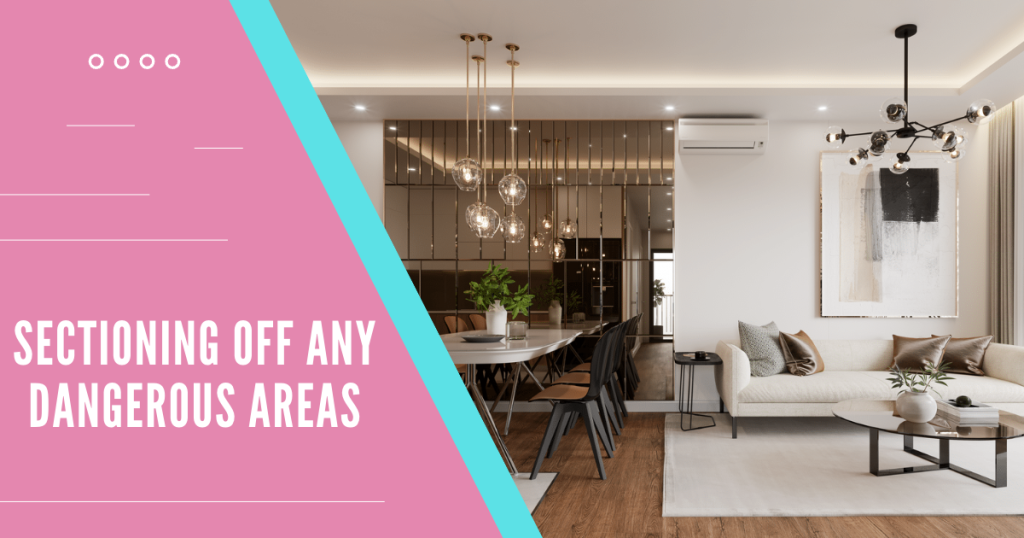
This is one of the most effective measures that any household can take.
Anywhere in the house where cleaning supplies, sharp objects, or power tools are stored can be sectioned off until the kids are old enough to be around those things. Even then, it’s still a good idea to use high shelves and locked cabinets; kids will be kids.
Just like with the stairs, gates and locks are your best friends here. Have you got a lot of tools in the garage? A crafts room? Or don’t want the kids inside your home office unsupervised? A few cheap locks and gates will do the job!
Families with pools or hot tubes will want to spend and get a sturdy fence to prevent unsupervised access. Children can easily drown in just a few inches of water, making pool safety a top concern for parents and caregivers.
Always explain to the kids why certain areas are off-limits and the risks of accessing them without an adult. As they get older, education is the most powerful tool in keeping them safe; plus, this will help them understand the importance of Safety and make them less likely to attempt to access these areas.
Being proactive, identifying threats, and taking the necessary steps to deal with and address them will give you peace of mind knowing that every corner of your home is safe for the kids!
Secure Shutting:
Plugging Up Openings and Holes in Walls, Floors & Doors

Any openings or holes in walls, floors, or doors should be covered as quickly as possible to ensure the little ones don’t get their fingers or other body parts caught in these spaces.
One common area where holes and openings may be found is around electrical outlets and switches. Luckily, these can be easily covered with safety plugs, which prevent the kids from touching the electrical wiring behind them.
It’s essential to check for any gaps or openings in walls or floors, particularly around baseboards, windows, and doors. These can be filled using caulk, which not only plugs up any existing gaps but can also help with energy efficiency.
And don’t forget the doors within the home! Periodically check and maintain them, especially those that lead to hazardous areas, such as the utility room.
I am doing regular inspections for any new or potential openings or gaps that may arise. As homes settle and shift over time, new doors will appear eventually. Being proactive and addressing these issues can help prevent accidents and injuries.
Keeping Small Fingers Out of Reach:
Childproof Latches and Handles
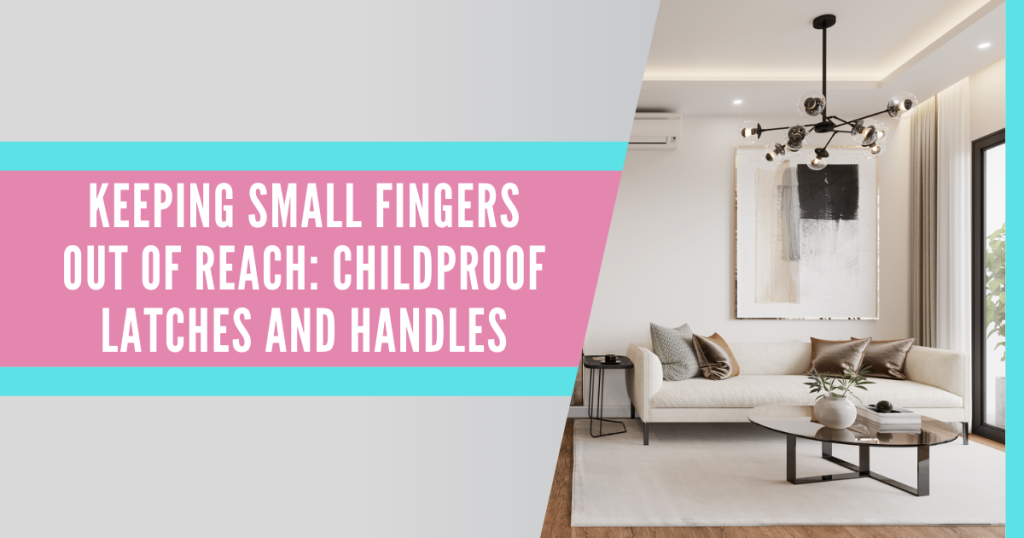
Let’s talk about latches and handles: the number one culprits in causing injuries to tiny fingers.
We discussed how the first step to childproofing your home is a complete assessment of the current situation.
So, when you assess, note every latch and handle within your kids’ reach. After that, it’s time to start installing childproof locks and doing the necessary maintenance to ensure they work correctly.
Start with the ones that lead to hazardous areas, such as the garage or laundry room. If you don’t want to put locks on them, there are some door knob covers specifically designed for children, so they can’t open them, even if they try hard!
Sometimes, older windows start to act up and don’t close properly. The moment you notice it is happening, fill it with caulk or weatherstripping for a cheap and easy fix.
Finally, check the cabinets and drawers in every room and if they’re safely locked. And not just the drawers with sharp knives! Remember to take precautions with the drawers where you keep breakables such as dishes or glassware.
Finding a Balance Between Style and Safety:
Choosing Kid-Friendly Floor Coverings and Furnishings

Choosing the right floor coverings and furnishings for your home can be overwhelming, especially for new homeowners.
You’re worried about looks and safety when you throw kids into the mix.
The game’s name is Finding the proper balance between Style and Safety. But don’t worry these days, that’s not as daunting of a task as it once was!
For example, you might have heard that hardwood floors and tiles are slippery and hazardous for young children. But if that’s a look you love and have always wanted for your home, you don’t have to give it up for the kids’ Safety.
Anti-slip treatments can be applied to hardwood floors for a safer slip-resistant finish.
And as the demand for childproofing solutions is increasing significantly, you’re going to find solutions like that for other kinds of floor coverings and furnishings. Hence, a stylish and safe living space is definitely within your reach.
Investing in pieces explicitly designed for kids can also be a great option. For example, child-friendly chairs and sofas with built-in safety features, such as rounded edges and soft cushions, can provide comfort and security for your little ones.
Another critical consideration when selecting furnishings in storage. Opting for pieces with ample storage space can help keep clutter, reducing the risk of tripping accidents for young children. Additionally, choosing furniture that is easy to clean, such as leather or vinyl, can help prevent the accumulation of dust and allergens.
By keeping Safety in mind when shopping and selecting pieces, you can create a welcoming and comfortable home that is functional for all household members, regardless of age.
Conclusion
Creating a safe home environment for children is an important task that requires careful consideration.
It’s essential to consider the materials used in floor coverings and furnishings, features like slip resistance, and storage space.
Investing in child-friendly furniture can provide comfort and security while helping reduce risks associated with sharp edges or hazardous objects.
By taking these simple steps, you can create a welcoming living space that meets the needs of adults and kids alike!
Please share this article with friends looking for tips on making their homes kid-safe so they, too, can benefit from these great renovation ideas!
